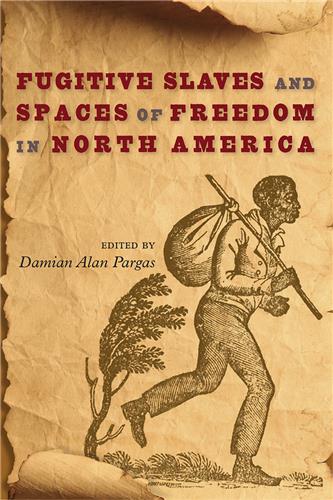Editors Lindsay Guarino and Wendy Oliver have assembled an array of seasoned practitioners and scholars who trace the numerous histories of jazz dance and examine various aspects of the field, including trends, influences, training, race, aesthetics, international appeal, and its relationship to tap, rock, indie, black concert dance, and Latin dance.
Search Results for 'Florida on Horseback'
1928 results for 'Florida on Horseback'
Please note that while you may order forthcoming books at any time, they will not be available for shipment until shortly before publication date
This volume introduces a new way to study the experiences of runaway slaves by defining different “spaces of freedom” that fugitive slaves inhabited. It also provides a groundbreaking continental view of fugitive slave migration, moving beyond the usual regional or national approaches to explore locations in Canada, the U.S. South, Mexico, and the Caribbean.
This is the first book to focus on archaeological evidence from the recent past related to children, childhood, and adolescence. Jane Baxter, a foremost authority on the archaeology of historic American childhood, synthesizes the growing variety of ways researchers have been approaching the topic, guiding readers through an abundance of current data on the experiences of children in American history.
In this volume, an array of international and interdisciplinary scholars shows the ways Bolívar has appeared over the last two centuries in painting, fiction, poetry, music, film, festival, dance, city planning, and even reliquary adoration. They illustrate how Bolívar’s body has been exalted, reimagined, or fragmented in different contexts, taking on a range of meanings to represent the politics and poetics of today’s national bodies.
In the first comprehensive study of the relations between Haiti and black America from the colonial period to the present, Leon Pamphile shows how historical ties between these two communities of the African diaspora have affected their respective histori
A culmination of Vogel's sixteen-year study of Casma culture, this book helps us understand the relationships between polities of the ancient world, how they built connections to other towns or cities outside and within their own boundaries, and demonstrates the importance of cities and urbanism in the development and collapse of complex societies.
This volume brings together archaeologists working in Ecuador, Peru, and Bolivia to construct a new prehistory of the Upper Amazon, outlining cultural developments from the late third millennium B.C. to the Inca Empire of the sixteenth century A.D.










